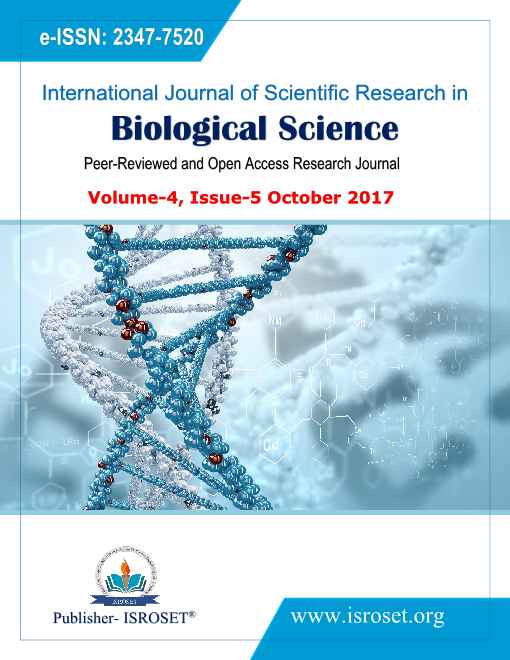In silico subtractive hybridization of Nostoc azollae 0708 reveals that majority of proteins with hypothetical functions are unique in its proteome
Keywords:
Nostoc, In silico subtractive hybridization, endophytic, hypothetical proteins, unique proteinsAbstract
Nostoc azollae 0708 is a cyanobacterium and live as an endo symbiont. The other Nostoc species such as Nostoc PCC 7107, Nostoc PCC 7120, Nostoc PCC 7524, Nostoc punctiforme PCC 73102 has different adaptation styles in their life style. Their adaptation in the environment range from hot fresh water pools to soil. Availability of the sequenced proteomes in public databases has led to the application of in silico subtractive hybridization method to predict the unique proteins of Nostoc azollae, which may be responsible for its endophytic behavior. Upon careful analysis, it is found that comparative proteome analysis of Nostoc azolle with other considered Nostoc species shows that the percentages of unique protein content ranges from 4.2% to 5.2% of which majority of proteins have hypothetical functions.
References
P.V. Arun, R.K. Bakku, M. Subhashini, P. Singh, N.P. Prabhu, I. Suzuki, J.S. Prakash, “CyanoPhyChe: a database for physico-chemical properties, structure and biochemical pathway information of cyanobacterial proteins”, PLoS One, Vol. 7, e49425, 2012.
R. Kottmann, I. Kostadinov, M.B. Duhaime, P.L. Buttigieg, P. Yilmaz, W. Hankeln, J. Waldmann, F.O. Glockner, “Megx.net: integrated database resource for marine ecological genomics”, Nucleic Acids Res, Vol. 38, D391-395, 2010.
D.G. Adams, B. Bergman, S.A. Nierzwicki-Bauer, P.S. Duggan, A.N. Rai, A. Schüßler, Cyanobacterial-Plant Symbioses, in: E. Rosenberg, E.F. DeLong, S. Lory, E. Stackebrandt, F. Thompson (Eds.) “The Prokaryotes: Prokaryotic Biology and Symbiotic Associations”, Springer Berlin Heidelberg, Berlin, Heidelberg, pp. 359-400, 2013.
R. Rippka, J. Deruelles, J.B. Waterbury, M. Herdman, R.Y. Stanier, “Generic Assignments, Strain Histories and Properties of Pure Cultures of Cyanobacteria”, Microbiology, Vol. 111, pp.1-61, 1979.
L. Ran, J. Larsson, T. Vigil-Stenman, J.A. Nylander, K. Ininbergs, W.W. Zheng, A. Lapidus, S. Lowry, R. Haselkorn, B. Bergman, “Genome erosion in a nitrogen-fixing vertically transmitted endosymbiotic multicellular cyanobacterium”, PLoS One, Vol. 5 e11486, 2010.
S. Fukiya, H. Mizoguchi, T. Tobe, H. Mori, “Extensive genomic diversity in pathogenic Escherichia coli and Shigella Strains revealed by comparative genomic hybridization microarray”, J Bacteriol, Vol. 186 pp. 3911-3921, 2004.
Y. Shao, X. He, E.M. Harrison, C. Tai, H.Y. Ou, K. Rajakumar, Z. Deng, “mGenomeSubtractor: a web-based tool for parallel in silico subtractive hybridization analysis of multiple bacterial genomes”, Nucleic Acids Res, Vol. 38, W194-200, 2010.
Y. Zhao, M. Qi, “Comparative Genomics of Erwinia amylovora and Related Erwinia Species-What do We Learn?”, Genes (Basel),Vol. 2, pp.627-639, 2011.
M. Qi, D. Wang, C.A. Bradley, Y. Zhao, “Genome sequence analyses of Pseudomonas savastanoi pv. glycinea and subtractive hybridization-based comparative genomics with nine pseudomonads”, PLoS One, Vol. 6, e16451, 2011.
Downloads
Published
How to Cite
Issue
Section
License

This work is licensed under a Creative Commons Attribution 4.0 International License.
Authors contributing to this journal agree to publish their articles under the Creative Commons Attribution 4.0 International License, allowing third parties to share their work (copy, distribute, transmit) and to adapt it, under the condition that the authors are given credit and that in the event of reuse or distribution, the terms of this license are made clear.







